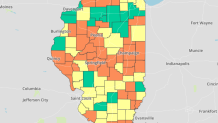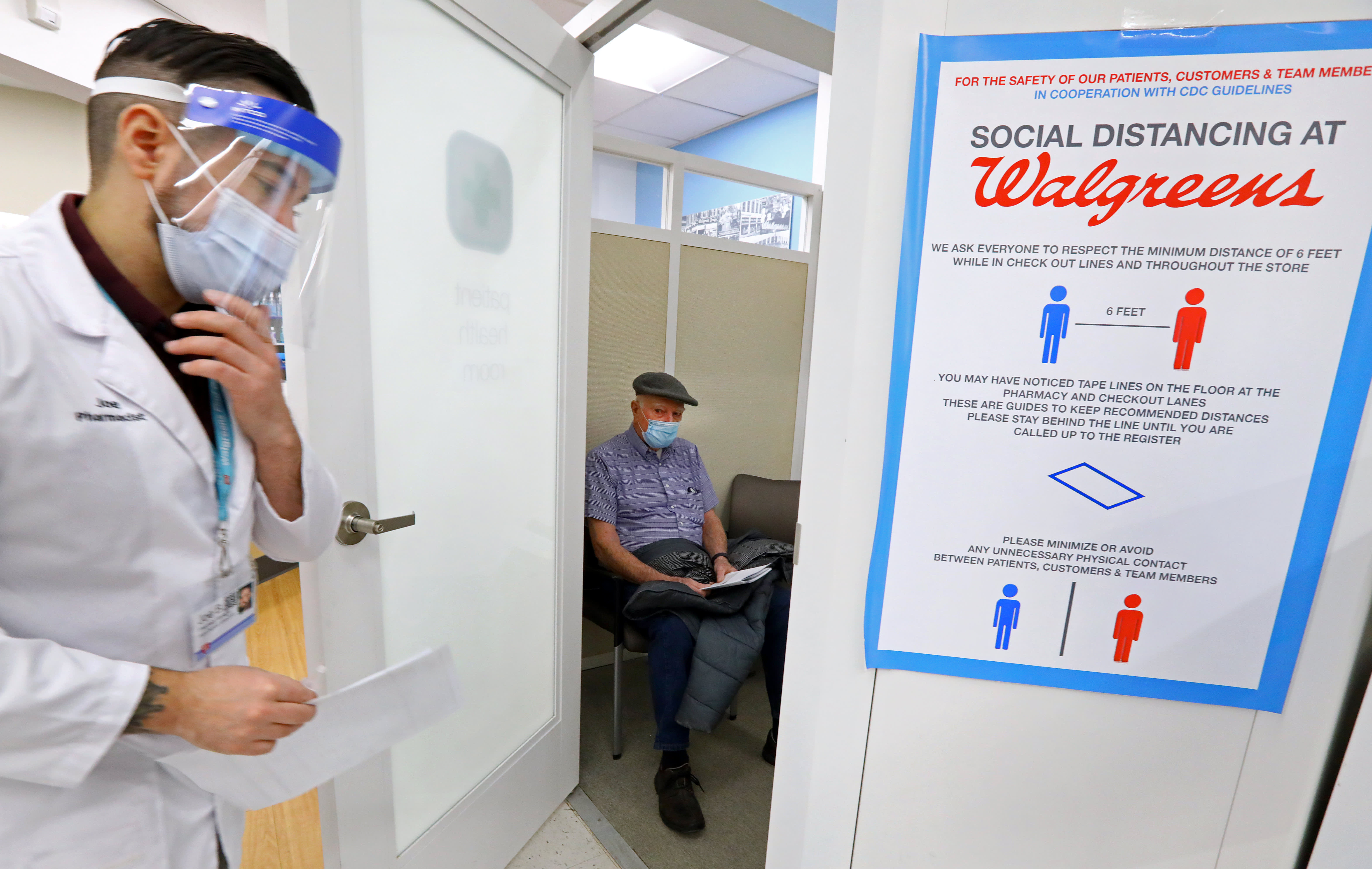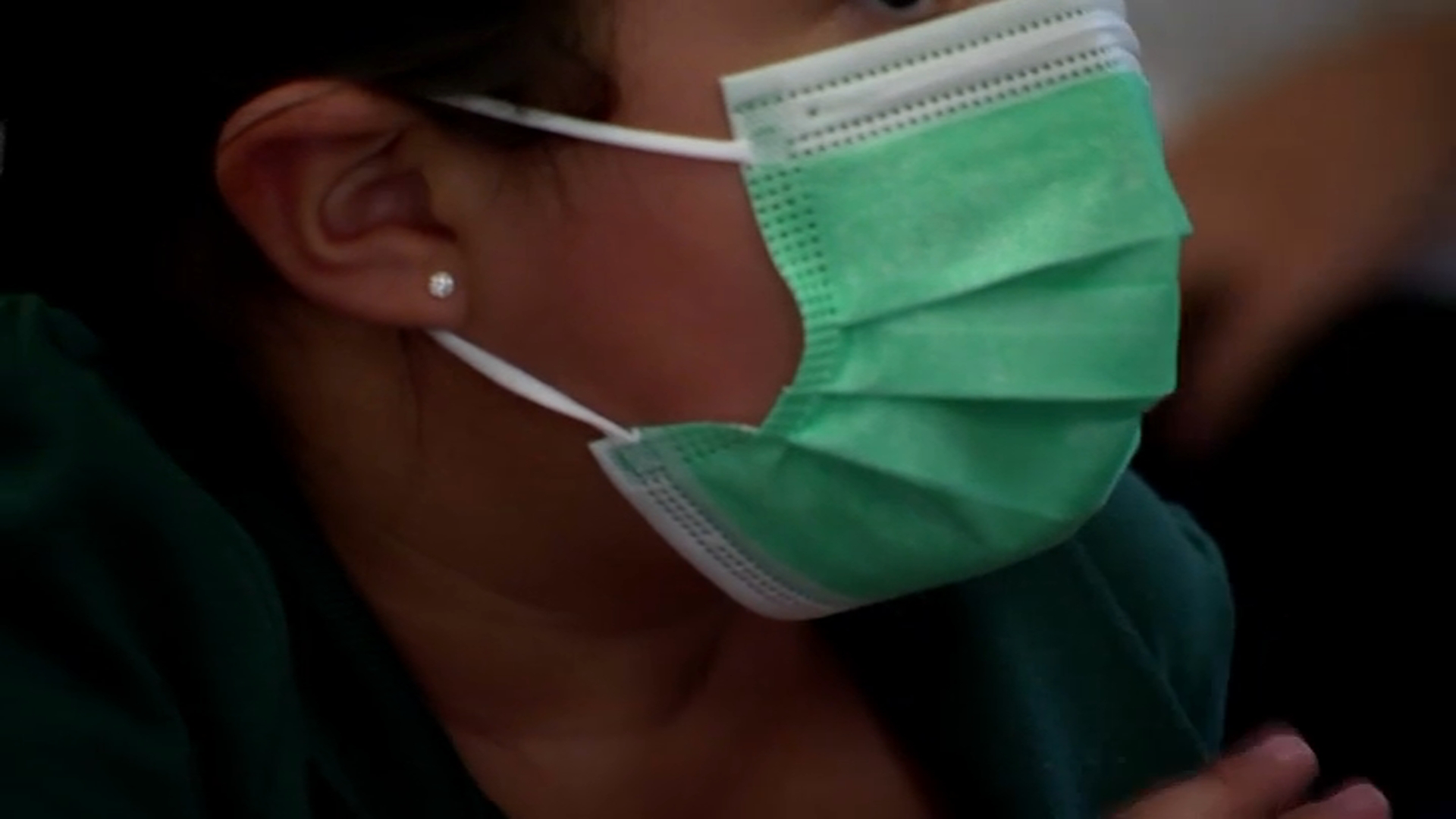
Illinois health officials reported a total of 23,334 new confirmed and probable cases of COVID-19, including 82 deaths, since Dec. 9. The metrics are up from the week prior, when officials said the state saw 21,404 new and confirmed cases of COVID-19, including 56 deaths.
As of Thursday evening, 1,712 people in Illinois were reported to be hospitalized with COVID-19. Of those, 211 patients were in the ICU and 63 were on ventilators. The preliminary seven-day statewide case rate is 183 COVID-19 cases per 100,000 Illinoisans.
According to CDC data, 86 state counties stand at an elevated community level of the virus. The number of counties are split evenly among elevated statuses, with 43 at "high" and 43 at "medium."
“Illinois continues to see a dramatic rise in communities at elevated risk levels for COVID-19,” Illinois Department of Public Health director Dr. Sameer Vohra said in a statement released Friday. “As we prepare for holiday gatherings with our loved ones, I want to remind Illinoisians that these elevated COVID-19 community levels, along with rising flu levels, are leading to a surge of respiratory infections, increased hospitalizations and limited hospital beds. I strongly recommend all Illinoisians take preventative steps to protect themselves and their family and friends, especially those most vulnerable including young children and individuals over 65."
Feeling out of the loop? We'll catch you up on the Chicago news you need to know. Sign up for the weekly Chicago Catch-Up newsletter here.

The following 43 counties are now at a "high" COVID-19 community level:
- Adams County
- Brown County
- Calhoun County
- Cass County
- Champaign County
- Christian County
- Clay County
- Coles County
- DeKalb County
- Douglas County
- Edgar County
- Edwards County
- Ford County
- Fulton County
- Gallatin County
- Hardin County
- Jasper County
- Johnson County
- Kankakee County
- Knox County
- Lee County
- Logan County
- Macon County
- Marshall County
- Mason County
- Massac County
- Menard County
- Peoria County
- Piatt County
- Pike County
- Randolph County
- Richland County
- Saline County
- Sangamon County
- Scott County
- Shelby County
- Tazewell County
- Vermilion County
- Wabash County
- Warren County
- Whiteside County
- Williamson County
- Winnebago County
The following 43 counties are now at a "medium" COVID-19 community level:
- Boone County
- Bond County
- Carroll County
- Clark County
- Clinton County
- Cook County
- Cumberland County
- De Witt County
- DuPage County
- Effingham County
- Fayette County
- Franklin County
- Greene County
- Hamilton County
- Henderson County
- Henry County
- Iroquois County
- Jackson County
- Jefferson County
- Jersey County
- Jo Daviess County
- Kane County
- Kendall County
- Lake County
- Lawrence County
- Madison County
- McDonough County
- McHenry County
- McLean County
- Monroe County
- Montgomery County
- Morgan County
- Moultrie County
- Ogle County
- Perry County
- Pope County
- Pulaski County
- Schuyler County
- Schuyler County
- Stephenson County
- Wayne County
- White County
- Woodford County
At a medium community level, anyone at high risk of getting seriously ill should wear a high-quality mask or respirator, such as an N95, when in public indoors. Additionally, if you have contact with someone else at high risk, consider self-testing to detect infection before contact, according to the CDC.
At a high community level, the CDC recommends everyone, regardless of vaccination status, wear masks in public settings.
A total of 25,597,784 vaccine doses have been administered in Illinois, with a seven-day rolling average of vaccines administered daily at 15,174 doses.
More than 78% of Illinois' population has received at least one COVID-19 vaccine dose, with more than 71% completing their primary series of vaccinations. Over 17% of eligible Illinoisans have received a bivalent booster dose.



